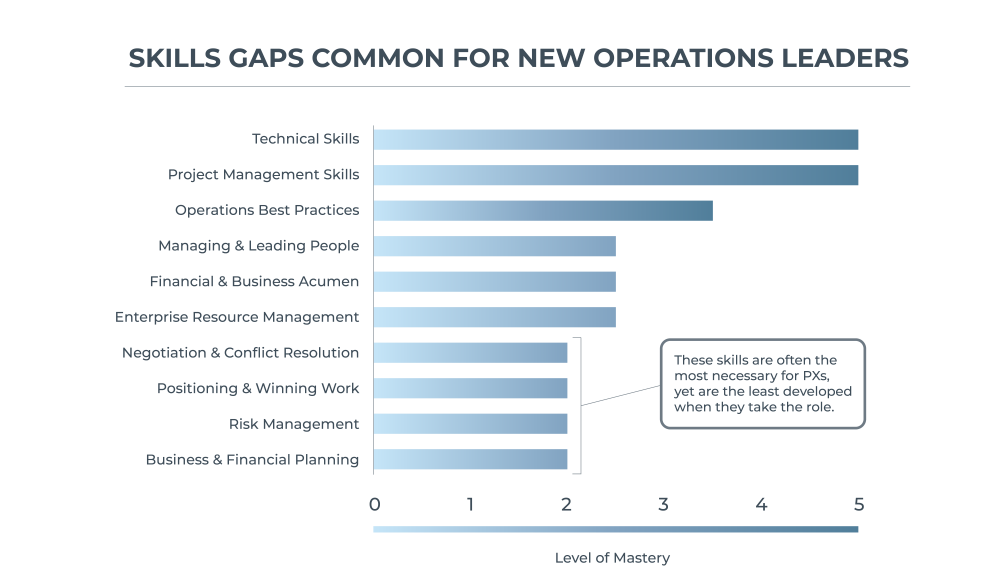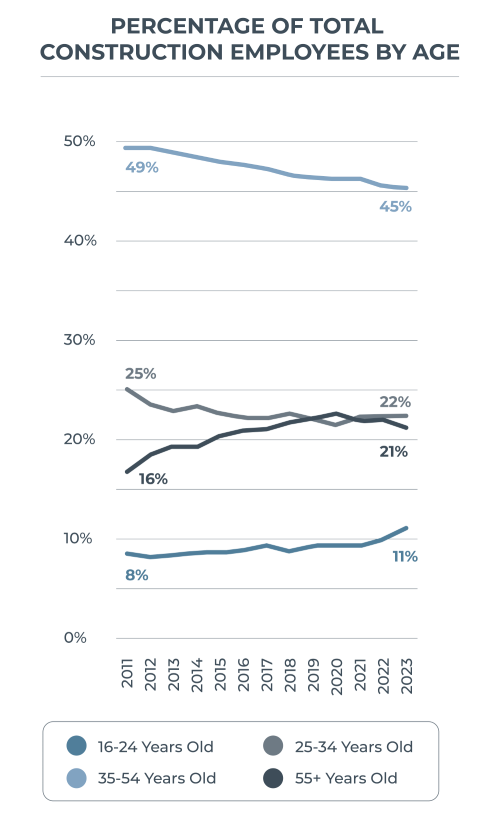Building Your Project Executive Toolkit

Your best project managers likely have great technical skills and have mastered the fundamentals of project management.
They understand deeply how to craft project plans, coordinate subcontractors, manage a project budget, develop agendas and project reports, and do those things that help drive successful outcomes on their projects.
We then promote our best project managers to the role of project executive (PX), and many of them unfortunately struggle with this transition to a new level of responsibility and expectations. They were world-class project leaders, but they need a different toolkit to be world-class project executives.
For the first time in their careers, these newly promoted project executives are tasked with more than just managing their individual projects. They are now being asked to manage teams, develop other team members, uncover sales opportunities, create business plans, and manage risk and conflict at a business unit level. Many have spent years or decades building technical and project management skills only to find that the core skills needed in the PX role are different.

In 1969, Canadian educator and researcher Laurence Peter wrote in “The Peter Principle” that “every employee tends to rise to his level of incompetence. This is especially true in construction, where we promote our best folks and keep promoting them until we find out what they’re not capable of doing in their roles.
The construction industry generally doesn’t do a good job developing project leaders into leaders of people and the business. Bob Murray, the former president of BOND Brothers, Inc., spoke about this recently on the FMI Built-in Podcast: “Ultimately, it’s very personally satisfying when you can tap an employee who’s been with you and say, ‘You’re moving up, and you’re getting a promotion, and here’s your added responsibilities.’ But then you have to figure out how to support those employees on that journey as well.”
To be successful in their new roles, project executives need:
- A clear definition of the PX role within your organization.
- Organizational support from others.
- Mentoring and coaching from executive leaders.
- New skills in their toolkit.
Clear Definition of the PX Role Within Your Organization
What is your organization solving for with the project executive role? Are you seeking additional support for your project managers? Someone to be responsible for carrying the ball from preconstruction through execution? A manager of sticky contractual situations or tough negotiations? Someone to identify new leads and opportunities? A customer relationship manager? Someone to own a market segment or business unit? Or all the above?
FMI often sees that contractors simply don’t do a good job identifying the primary reasons for having a project executive role within their organizational structure. This leaves your project executives without a clear understanding of their highest priorities.
T.W. Frierson Contractor, Inc., a Nashville-based general contractor, established its project executive role in 2021 — promoting three experienced project leaders. First, President Kit Ozburn worked with the new PXs to define all the possible responsibilities for their new role. The list they created was five pages long. “The guys told us, ‘Nobody could do that!’ — and they were right,” Ozburn said.
After a series of whiteboarding sessions, they prioritized two primary objectives for the project executives. “We were just trying to plug holes,” Ozburn said. “We were suffering fade too often. The other thing we tackled, beyond overseeing projects, was to task the PXs with training their teams.”
While Ozburn would admit that his project executives are still growing into their roles and still find themselves “drilling a level or two deeper than they should into project activities,” they do have clarity for themselves on what the organization needs most from them.
Organizational Support from Others
Most organizations find that they can’t expect a project executive to be great at everything. Based on the decisions they make when defining the PX role, contractors need to determine how best to support them with people, structures and processes. PENTA, a Nevada-based general contractor, created the project executive role more than a decade ago, and today counts 10 PXs. Joel Wallis, PENTA’s chief operating officer said, “We have both kinds of PXs, those who generate new work and those who are better at maintaining client relationships and running project teams.” And that’s okay.
Preconstruction and business development responsibilities are often the two areas that new project executives are least comfortable with, and yet they’re what most organization decide are requirements for the PX role.
PENTA solved for the challenge of preconstruction by mirroring the structure of operations and creating the role of preconstruction executive. Preconstruction executives have deep technical skills and responsibilities for interacting with owners, run the preconstruction process along with the project executives who oversee the project from the proposal phase through execution. This allows project executives to stay focused on their highest and best uses, managing and developing their project teams, mitigating project risks and connecting with clients.
Project executives at PENTA are responsible for generating new work, whether that is through project performance or acquiring new relationships and repeat clients. There are no formal business development metrics for their PXs because the metrics are pretty straight forward and easy to recognize. Are the business development initiatives and plans being met? The project executives should be always measuring project performance, client maintenance and acquiring new clients. “Our PXs are the ones responsible for maintaining client relationships whether those relationships are on an active project or from past working relationships. Maintaining past relationships is critical to maintaining repeat clients especially when clients are in between projects,” said Wallis.
Project executives supported by preconstruction leaders and business development champions are often more successful in fulfilling the expectations of their roles. It is the responsibility of executive leadership to figure out how they will provide this organizational support to their PXs.
Mentoring and Coaching from Executive Leaders
Project executives are often people in a contracting company that we expect to become our next vice president, business unit leader, chief operating officer or even CEO. Expectations are high, and there is no training manual.
Some of the most critical skills are best obtained through shadowing, coaching and mentoring by executive leaders. These skills may include:
- Lead and motivate employees.
- Understand the finances and risks of the business.
- Make decisions about resources at the group or enterprise level.
- Handle tough contracts or change order negotiations.
- Resolve conflict.
- Position the company to win work.
- Think strategically and plan for the future.
Wallis said they expect PENTA’s PXs to be responsible for “making decisions about managing the customer, contracts, how we’re going to handle tough change orders, financial projections, company culture, risk management and the chemistry of the projects teams.”
That’s a tall order. Wallis continued, “Some people can grow into it more and learn, but there’s not really a training class. It’s coaching, watching, seeing their C-suite navigate these same challenges. They have to sit at the table with you and see it for themselves, so they can pick up the nuances of what these skills look like. We try not to miss an opportunity to have them in the room with us during negotiations or contract discussions.”
T.W. Frierson also invested in executive coaching for its three PXs, one of whom just had his first coaching session a month ago. “We want him to learn about what makes him a strong leader of people, where his opportunities lie, and what he can do to grow. It [executive coaching] was transformative for me, and I hope it will be for him, too,” Ozburn said.
The best thing executive leaders can do for new project executives is model the skills you want them to grow and invest in their growth. Don’t miss an opportunity for mentoring and coaching your PXs on those parts of their new role that are not yet part of their toolkit.

New Skills in Their Toolkit
FMI recognizes that the largest challenge facing most contractor organizations today developing talent. More than 21% of all construction employees are older than 55, up from 16.8% in 2011. As more people retire, there are fewer experienced professionals today who are ready to take on the role of project executive.
The contractors most likely to build world-class project managers into worldclass project executives are those that have a clear picture of what they need most from the PX role, support them throughout the business and help them put new leadership tools in their toolkit.



BLOG_TN_500x410.png)